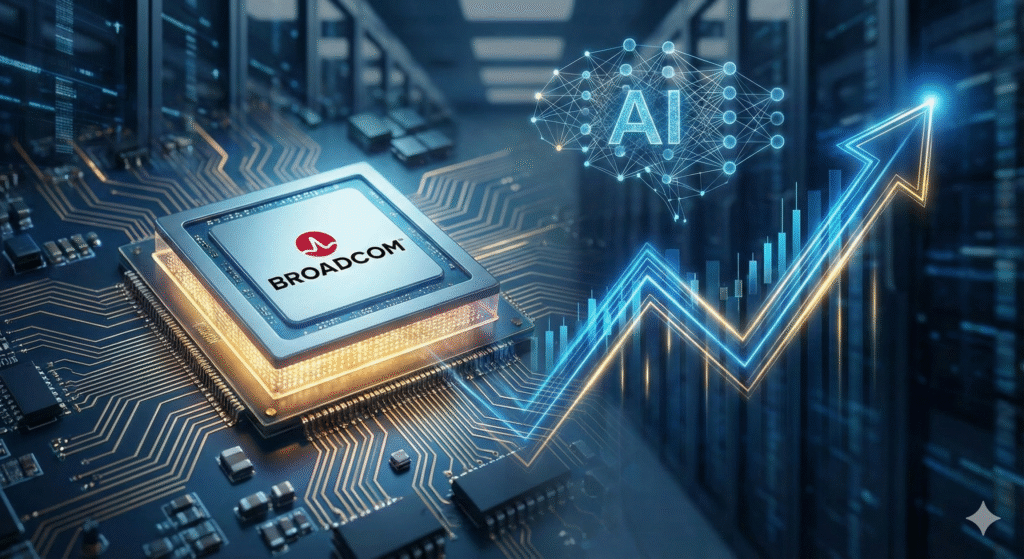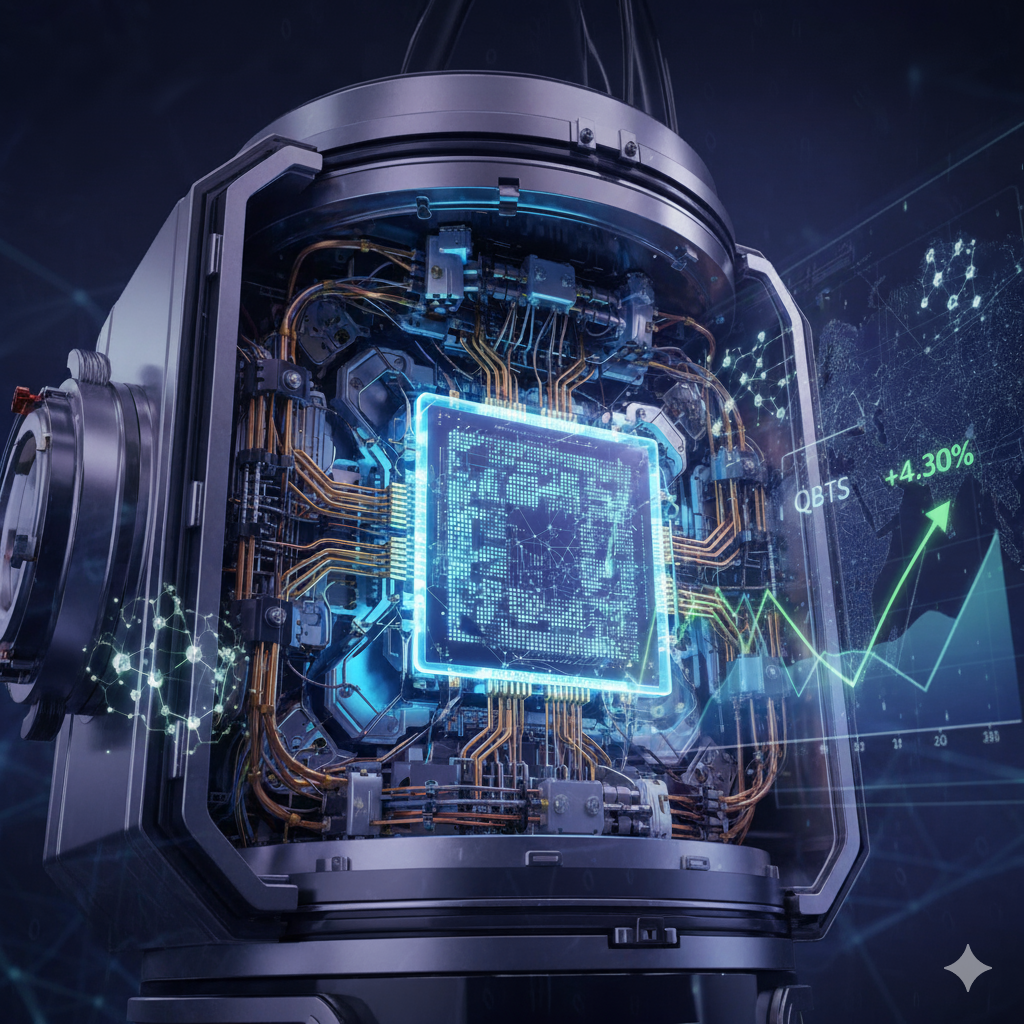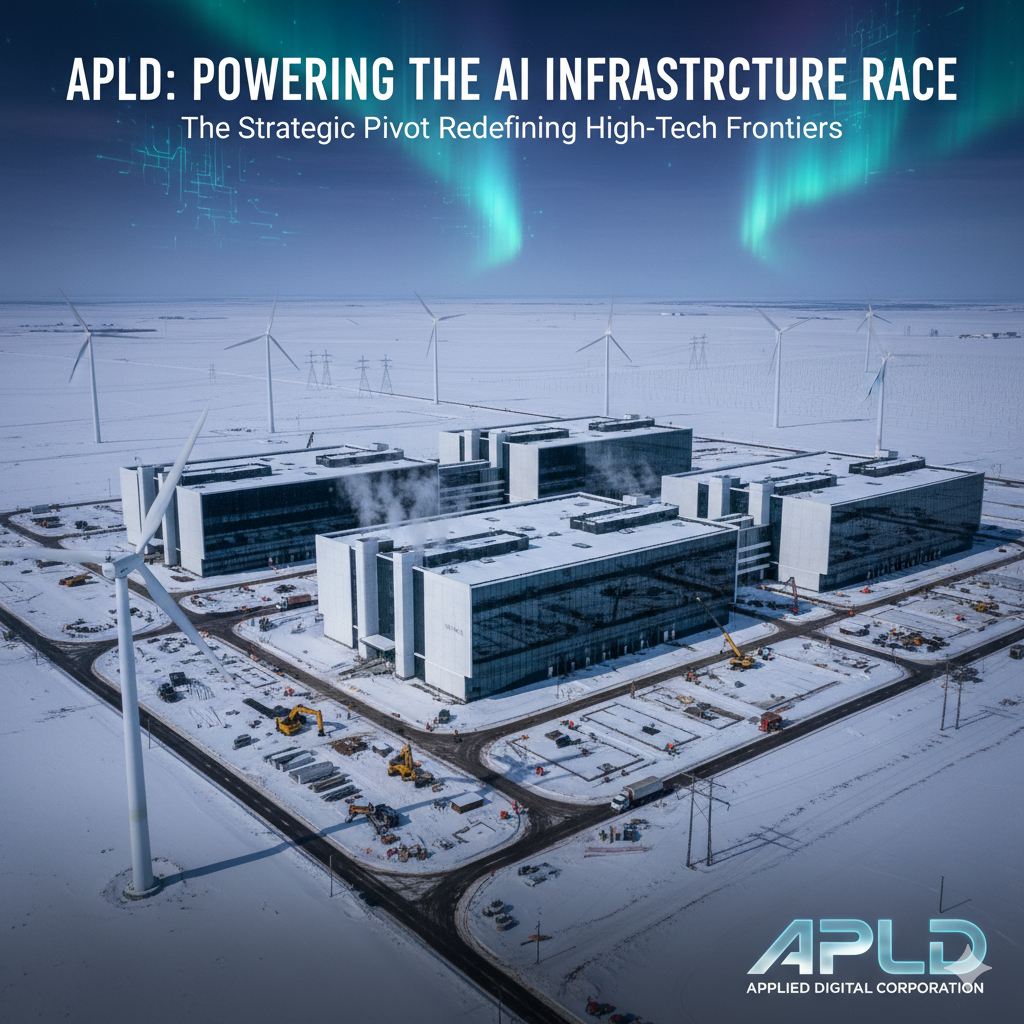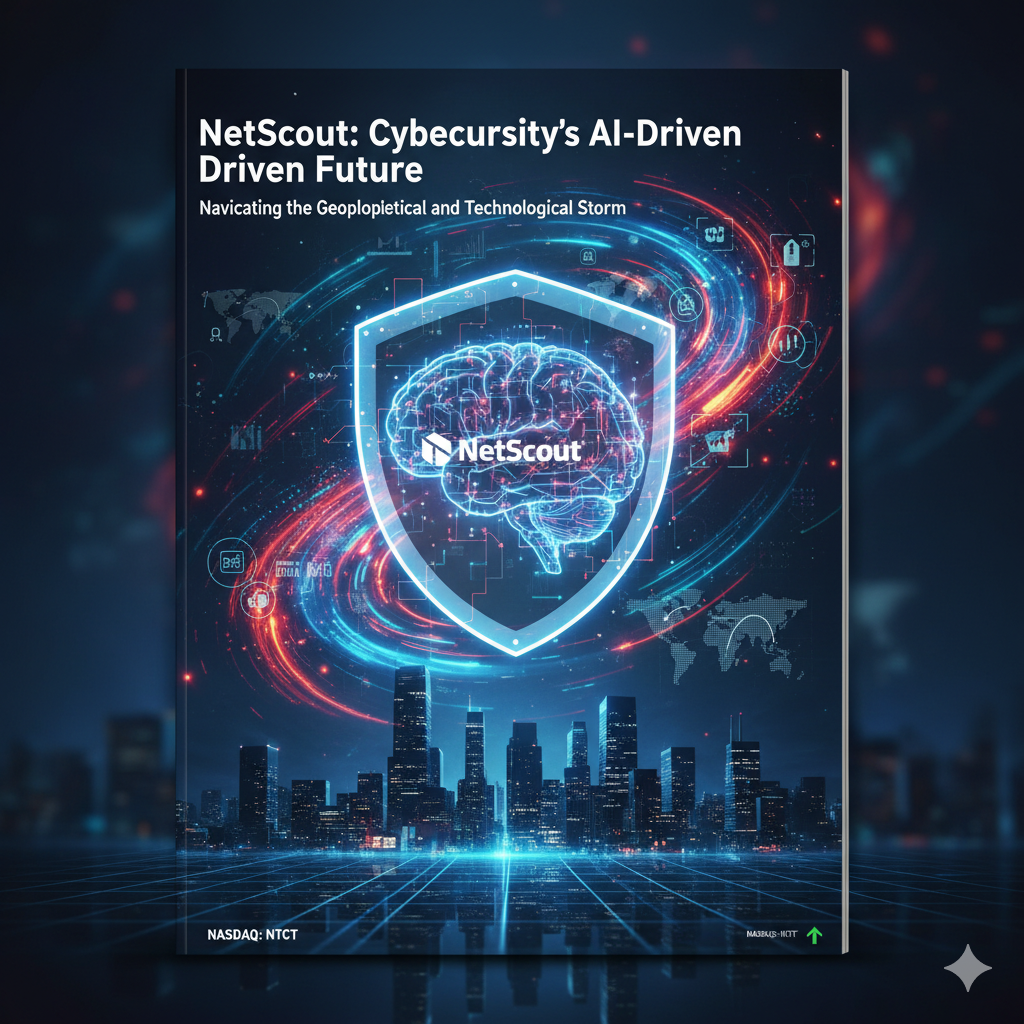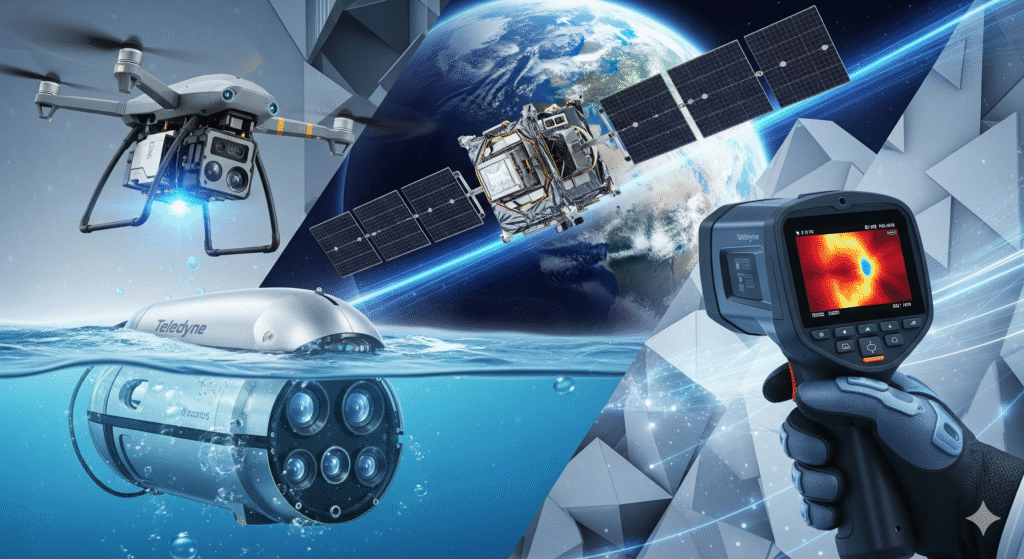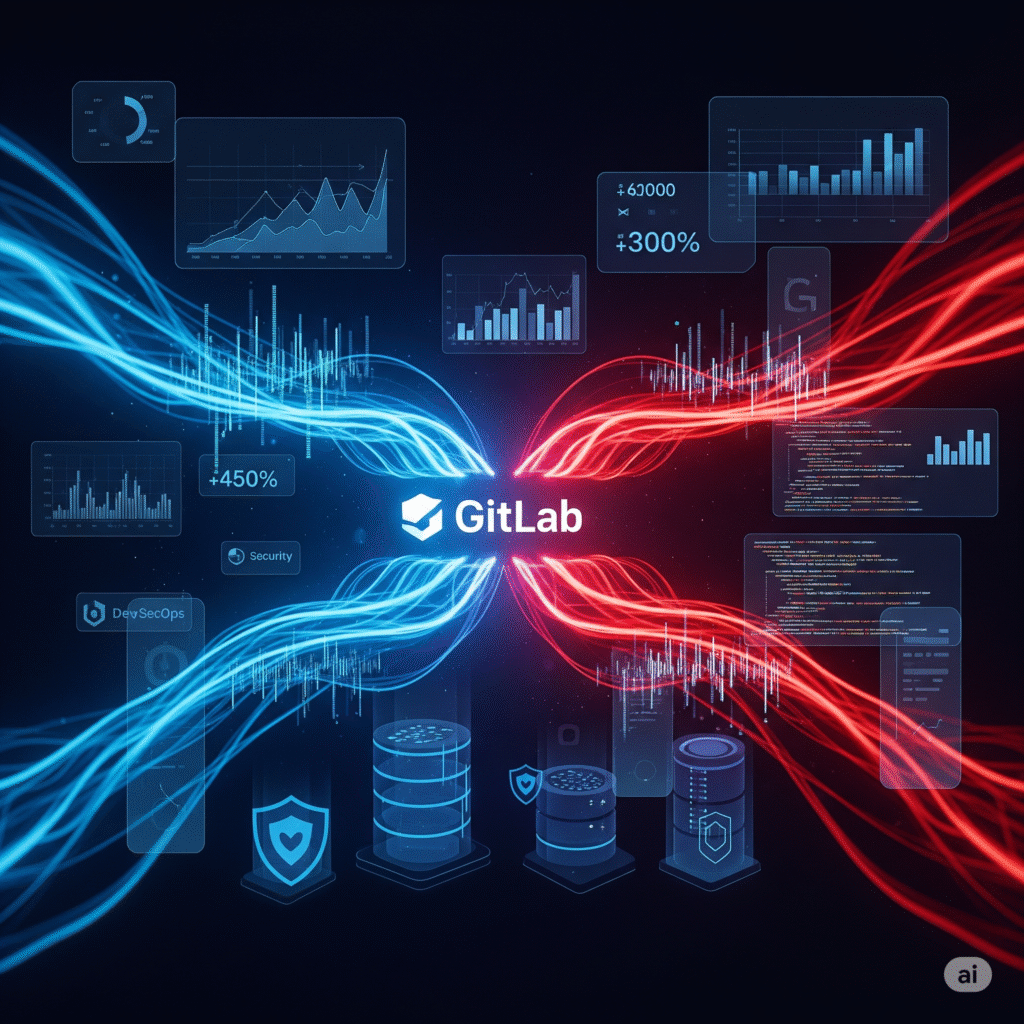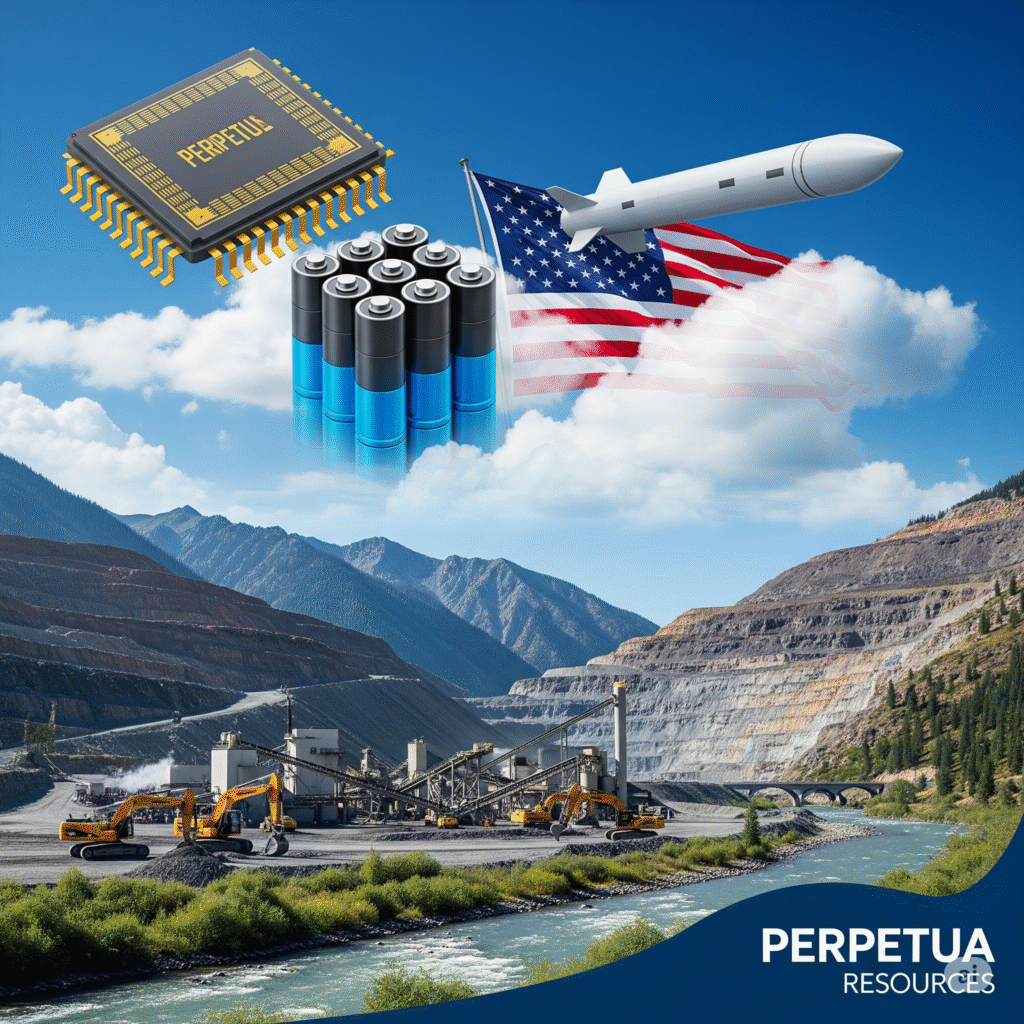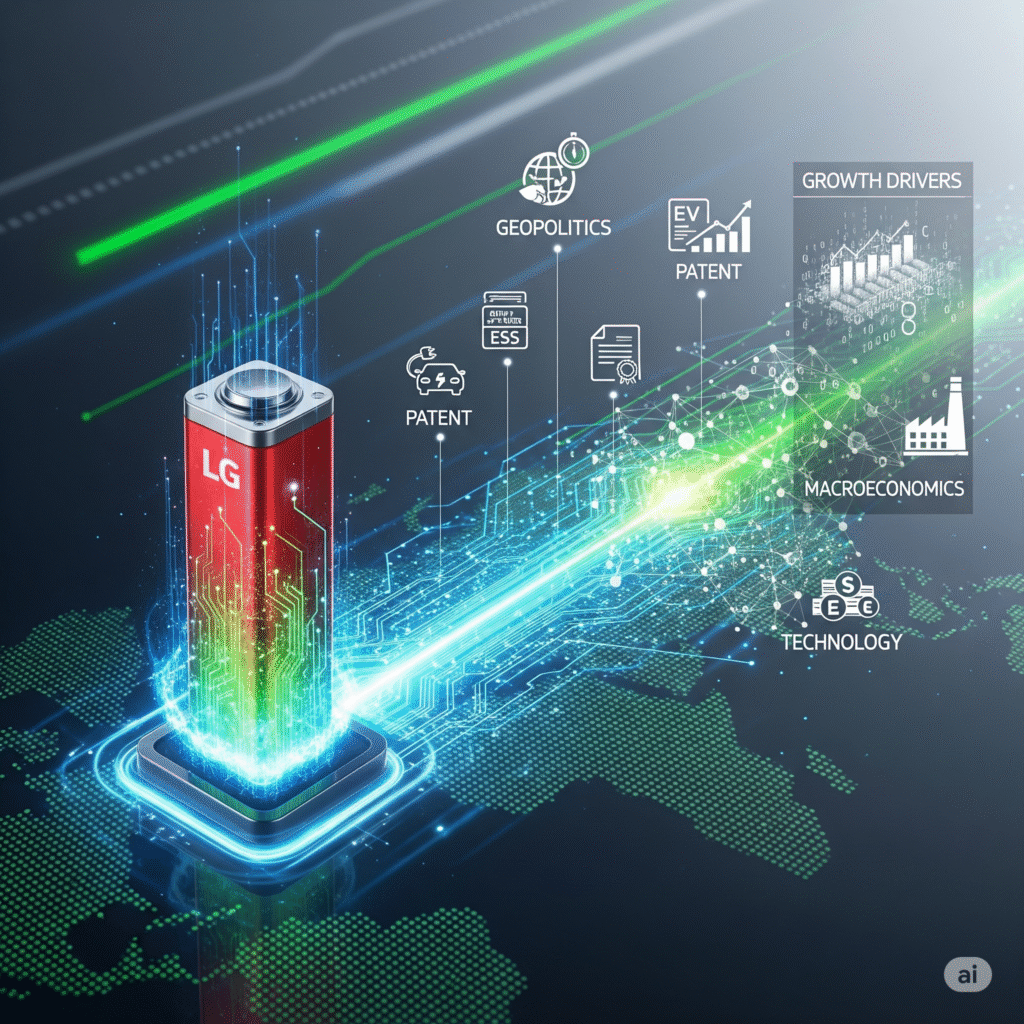I. The Ascent to Vertical Dominance
I.1. The New Tech Thesis: From Search to Full-Stack Control
Google has evolved beyond being a digital advertising powerhouse. The company executed a strategic pivot toward full-stack, deep-tech infrastructure provision. This strategy targets foundational control over the next era of computation.1 These foundational systems include advanced Artificial Intelligence and complex Quantum computing hardware. Future economic value rests heavily on proprietary hardware and novel, specialized algorithms. Vertical integration guarantees highly optimized system performance and establishes formidable competitive barriers to entry.
I.2. Dual Engines of Growth: Hardware and Discovery (Macroeconomics, Geostrategy)
Google’s expanding market dominance relies on two powerful, integrated engines. The first engine is custom silicon, primarily Tensor Processing Units (TPUs).1 TPUs secure an immediate, crucial competitive advantage in demanding generative AI training workloads. The second engine involves scientific breakthroughs like the Verifiable Quantum Advantage and AlphaFold.2 These advances establish long-term, structural superiority in high-margin scientific discovery sectors. This integrated approach positions Google to maximize value capture in both specialized cloud services and critical life sciences.
Google actively mitigates threats posed by relying on commodity hardware, such as external GPUs. The company also addresses the challenge of AI commoditization by controlling the computational bedrock.5 Training large language models (LLMs) requires immense computational power and incurs massive costs.6 Google developed TPUs specifically to optimize its internal AI workloads and reduce massive infrastructure expenses. By encouraging key competitors, notably Anthropic, to adopt the proprietary TPU architecture, Google locks in crucial high-margin infrastructure revenue.7 This strategy transforms infrastructure from a potential cost center into a powerful competitive asset and a definitive profit generator.
II. Technology Lock-in: The Custom Silicon Advantage (Technology, Economics)
II.1. Controlling the AI Supply Chain with TPUs
Google’s Tensor Processing Units are custom chips engineered specifically for demanding machine learning tasks.1 This specialized hardware provides a definitive competitive edge over general-purpose CPUs and GPUs.8 The newest chips, including the TPU v5p and Ironwood (v7), are specifically designed for massive LLM training and large-scale generative AI workloads.3 TPUs deliver superior energy efficiency and performance scaling, lowering operational expenses for cloud customers.8 This proprietary hardware accelerates innovation cycles while limiting the rapidly increasing costs associated with scaling large AI models.6
II.2. The Anthropic Leverage: Lock-in by Design
The massive deal struck with Anthropic involves deploying up to one million TPUs.5 This strategic investment, valued in the tens of billions of dollars, is highly calculated.9 The transaction mandates a deep technical reliance on Google’s specialized ecosystem.7 Anthropic must architect its powerful Claude models specifically around the TPU infrastructure. This tight integration makes any potential migration to rival platforms, such as AWS Trainium or NVIDIA, technically complex and financially prohibitive.7
This transaction represents more than a simple commercial sale; it is a critical move in infrastructure geostrategy. Competition in the AI chip market remains intense, with rivals like AWS and Microsoft actively developing custom chips.3 Anthropic, a leading AI developer, committed to Google’s TPU system despite Amazon being its primary investor and cloud provider.7 This demonstrates Google’s ability to use technological superiority in price-performance and efficiency to dictate strategic infrastructure choices for core industry players.9 This move ensures that a significant portion of future generative AI success is monetized directly through Google Cloud services.
II.3. Efficiency and Financial Returns
TPU performance is quantifiable and exceptionally strong. The TPU v5 achieves 460 TFLOPS for mixed precision tasks.8 The high-density TPU v5p utilizes liquid cooling and targets massive-scale generative AI modeling workloads.8 Deploying TPUs through Google Cloud democratizes access to powerful AI capabilities for a broad range of businesses.1 This accessibility further solidifies the company’s powerful market position in AI cloud solutions.
| Hardware/Provider | Core Strategy | Peak Performance (Key Metric) | Strategic Value/Lock-in |
|---|---|---|---|
| Google TPU v5p | Vertical LLM Optimization | Up to 460 PetaFLOPS per pod | Mandatory infrastructure for Anthropic; Cloud ecosystem control 7 |
| NVIDIA GPUs (General) | Broad Market Leader | High general performance, wide adoption | Targeted for internal replacement due to high cost and lack of vertical optimization 5 |
| AWS Trainium 2 | Cloud Cost Efficiency | Powers 500,000-chip Project Rainier | Internal AWS optimization; competes on price and predictable scaling 3 |
| Microsoft Maia AI | Efficiency and Internal Workloads | Operational in Azure Data Centers | Powers Microsoft Copilot; focus on energy efficiency/cooling 5 |
III. Quantum Breakthrough: Verifiable Utility (Science, High-Tech, Cyber)
III.1. Beyond Supremacy to Verifiable Advantage
Google successfully redefined the quantum goalposts away from purely theoretical benchmarks. The focus is now on achieving demonstrable, verifiable utility. The Willow quantum chip attained “Verifiable Quantum Advantage” using the novel Quantum Echoes algorithm.2 Previous “supremacy” claims involved debated theoretical benchmarks, such as random circuit sampling.11 This new achievement centers on measuring verifiable expectation values from a physical experiment.13 The Quantum Echoes algorithm simultaneously tests both computational complexity and result precision.2
III.2. Simulation Speed and Precision in Science
The Quantum Echoes algorithm runs 13,000 times faster on Willow than the best classical supercomputer.2 This massive speedup applies directly to simulating complex quantum chaos, measured using Out-of-Time-Order Correlators (OTOCs).13 This speedup is practical, not merely theoretical. It enables advanced applications like augmenting Nuclear Magnetic Resonance (NMR) spectroscopy.13 This precision acts as a “molecular ruler,” promising superior mapping of complex molecular structures.2 This capability is critical for both materials science and pharmaceutical drug discovery.16
The strategic pivot to “Verifiable Quantum Advantage” de-risks quantum investment dramatically. It defines a clear, pragmatic pathway for commercial Quantum Computing as a Service (QCaaS). Earlier supremacy claims often encountered skepticism when advanced classical algorithms achieved rapid catch-up (e.g., USTC simulating Sycamore’s task quickly).11 The verifiable advantage links quantum performance directly to physical reality, such as molecular structure analysis.2 This validates quantum computing as a tool for physical simulation where classical methods fundamentally fail.14 This utility breakthrough strongly supports the projected growth of the quantum market to $20.20 billion by 2030.17
III.3. Paving the Path to Q-Day (Cyber)
Quantum progress inevitably accelerates the global cybersecurity threat environment. While this specific achievement does not yet enable Shor’s algorithm, which breaks current RSA encryption 15, it emphasizes the rapid progress toward powerful quantum computers.19 Governments and financial institutions must urgently pursue mandatory migration to Post-Quantum Cryptography (PQC).27 This widespread PQC adoption mitigates the future threat of “harvest-now/decrypt-later” attacks against sensitive data.18 Google’s accelerating technical progress reinforces PQC preparation as an immediate necessity for robust cyber resilience.
IV. The Bio-Economic Multiplier: DeepMind and AlphaFold (Economics, Science, Macroeconomics)
IV.1. Structuring Value in Pharmaceuticals
AlphaFold, developed by DeepMind and commercialized by Isomorphic Labs, earned a Nobel Prize for its accurate protein structure prediction capabilities.4 This AI system solves a decades-old computational biology problem, revolutionizing R&D.22 It replaces extensive wet lab experimentation with precise, rapid simulation.26 AlphaFold 3 significantly expanded its predictive scope.23 It now includes predictive interactions with DNA, RNA, and small molecules, critical for understanding disease mechanisms and designing targeted treatments.23
IV.2. Quantifiable Cost Reduction in R&D
AlphaFold delivers immediate, measurable economic impact across the pharmaceutical sector. Industry experts project that AlphaFold integration reduces Phase I drug development costs substantially.4 Costs drop from over $100 million to approximately $70 million per candidate.4 This estimated 30% saving per candidate democratizes drug development and accelerates the time-to-market for novel therapies.4 The aggregate economic benefit across the global pharma industry represents a massive macro-economic transformation.
AlphaFold represents Google’s most successful instantiation of “AI-as-a-service” utility. It successfully extracts immense economic value from highly regulated, high-stakes industries without dependence on advertising revenue.
IV.3. Strategic Partnerships and Valuation
Isomorphic Labs, operating within the Alphabet structure, has strong commercial validation. The company successfully secured $600 million in external funding.24 Furthermore, Isomorphic Labs negotiated deals worth nearly $3 billion combined with major pharmaceutical companies, including Eli Lilly and Novartis.24 This robust monetization strategy confirms the multi-billion-dollar commercial value of AlphaFold’s proprietary predictive technology.21 Alphabet effectively channeled Nobel-level scientific intellectual property into a scalable, high-value, high-margin enterprise.
This commercial success creates a new, high-margin revenue vector based on intellectual property licensing and specialized data services.25 This insulates Alphabet from potential cyclical dependency on the core advertising business. By structurally reducing R&D risk for pharmaceutical clients, Google embeds itself as an indispensable strategic partner in a trillion-dollar industry. AlphaFold functions as a major economic multiplier for global healthcare advancement.26
| Metric | Pre-AlphaFold (Classical) | Post-AlphaFold (AI-Augmented) | Economic Significance |
|---|---|---|---|
| Phase I Development Cost | Over $100 Million | Approximately $70 Million | Reduces R&D risk; 30% saving per candidate 4 |
| Target Identification Time | Months to Years | Weeks to Months | Accelerates Time-to-Market (TTM); lowers carrying costs 21 |
| Predictive Capability | Protein structures only | Structures + interactions (DNA, RNA, small molecules) | Broadened application scope across most disease mechanisms 23 |
| Commercialization Value | N/A | Secured nearly $3 Billion in deals (Lilly, Novartis) | Validates high-margin revenue stream separate from core business 24 |
V. Geopolitics and Intellectual Property Defense (Geopolitics, Patent Analysis)
V.1. The Critical Quantum Race
Quantum computing capabilities carry profound national security implications. Applications span optimizing complex military logistics and wargaming to potential fundamental code-breaking.27 Google’s verifiable quantum advantage heightens the urgency of this technological competition globally. The most intense strategic race currently occurs between the United States and China.29 The U.S. government already designated quantum as critical infrastructure via the CHIPS and Science Act 27
V.2. IP Portfolio as a Strategic Asset
Google maintains foundational control through aggressive, specialized patent filings. In 2024, Google held the second-highest number of granted quantum technology patents globally (168).30 These patents form a crucial geopolitical moat. The portfolio covers specialized superconducting qubit designs, advanced error-correcting codes, and feedback control systems necessary for stable scaling.30 Control over this core intellectual property dictates the necessary pace and future architecture of global quantum development.
V.3. Futureproofing Through Tiling and Error Correction
Google’s patented innovations strategically focus on scaling solutions. This includes developing “chip architecture for tiling multiple quantum processor chips together”.30 Further patents cover sophisticated “machine learning approaches to calibrate” complex multi-qubit arrays.30 These innovations are essential for the industry transition toward fault-tolerant quantum computing systems.30 This intellectual property dominance ensures that any global competitor must eventually engage with Google for core technologies to scale their quantum hardware effectively.30
Google’s IP strategy extends its domestic technological lead into powerful geopolitical leverage. It ensures that US-aligned quantum hardware standards rely heavily on proprietary Google technology. Geopolitical friction already limits the free exchange of quantum discoveries between the US and China.29 Quantum is inherently a dual-use technology, serving both commercial utility and military interests.27 By concentrating IP ownership in essential, high-barrier-to-entry technologies like tiling and error correction, Google positions itself as a mandatory licensing partner for nations pursuing large-scale quantum deployment.30 This technical choke point provides powerful negotiating leverage and reinforces the US’s strategic control over the critical quantum supply chain.29
VI. Conclusion: Investment Implications
Google successfully integrated specialized, proprietary hardware (TPUs) with Nobel-caliber scientific discovery (AlphaFold). It also established foundational dominance in quantum research (Verifiable Advantage). This cohesive vertical strategy ensures proprietary control over the most valuable, computation-intensive sectors of the future. These vital sectors include generative AI, accelerated drug discovery, and advanced physics simulation.
The resulting technology lock-in and deep intellectual property moats represent formidable competitive advantages.7 This structural control justifies assigning a long-term premium valuation for Alphabet. By optimizing its internal cost structure through specialized TPUs and unlocking new, high-margin vertical markets via Isomorphic Labs, Google fundamentally shifts its valuation basis.4 The company transitions from reliance on cyclical advertising revenue to indispensable, deep-tech infrastructure and highly valuable scientific intellectual property. These structural breakthroughs confirm Google’s enduring position at the technological and economic frontier.
References
- AI Chip Competition: Google’s TPU Strategy and Leadership Lessons – iAvva AI
- Our Quantum Echoes algorithm is a big step toward real-world applications for quantum computing | College of Chemistry
- AI chips: How Google, Amazon, Microsoft, Meta, and OpenAI are challenging NVIDIA
- AI Reshaping Drug Discovery: Nobel-Winning AlphaFold Leads Revolution in Pharmaceutical R&D – MedPath
- NVIDIA’S NIGHTMARE: Google, Amazon, and Microsoft Deploy Secret Weapon to CRUSH the AI Chip King! Is the $5 TRILLION Empire Crumbling?!
- The Synergy Between Quantum Computing And Generative AI – Forbes
- Anthropic Just signed a Multibillion Dollar Deal With Google – Winsome Marketing
- GPU and TPU Comparative Analysis Report | by ByteBridge – Medium
- Google, Anthropic seal gigawatt-scale TPU deal – The Register
- Google claims ‘quantum advantage’ again but researchers remain sceptical | Nature : r/QuantumComputing – Reddit
- Quantum supremacy – Wikipedia
- USTC’s Zuchongzhi-3 challenges Google’s quantum supremacy – TechHQ
- A verifiable quantum advantage – Google Research
- Google Quantum AI Shows 13,000× Speedup Over World’s Fastest Supercomputer in Physics Simulation
- Google Announces “Verifiable Quantum Advantage” on Willow Quantum Chip
- Quantum Applications
- Quantum Computing Market Size, Share, Statistics, Growth, Industry Report 2030 – MarketsandMarkets
- State of the post-quantum Internet in 2025 – The Cloudflare Blog
- How quantum computing could become the next frontier in national security | Morningstar
- Google unveils breakthrough in quantum computing with Quantum Echoes algorithm
- Why AlphaFold 3 is stirring up so much buzz in pharma – PharmaVoice
- AlphaFold two years on: Validation and impact – PNAS
- Review of AlphaFold 3: Transformative Advances in Drug Design and Therapeutics – NIH
- Alphabet’s AI biotech Isomorphic Labs hauls in $600M to power next-gen drug design model
- Quantum Leap in Finance: Economic Advantages, Security, and Post-Quantum Readiness – arXiv
- Great expectations – the potential impacts of AlphaFold DB | EMBL
- The impact of quantum technology on national security | Deloitte Insights
- “Quantum Leap” – China’s mind-blowing chip outpaces Google by a million-fold, revolutionizing speed – Sustainability Times
- Another Technology Race: US-China Quantum Computing Landscape – Belfer Center
- Top Quantum Computing Patents: Trends, Players, and Innovations
Google Long (Buy)
Enter At: 293.65
T.P_1: 311.06
T.P_2: 322.56
T.P_3: 332.78
T.P_4: 347.47
T.P_5: 362.80
T.P_6: 380.05
T.P_7: 399.21
T.P_8: 412.62
T.P_9: 428.59
T.P_10: 446.48
T.P_11: 461.17
S.L: 256.80




